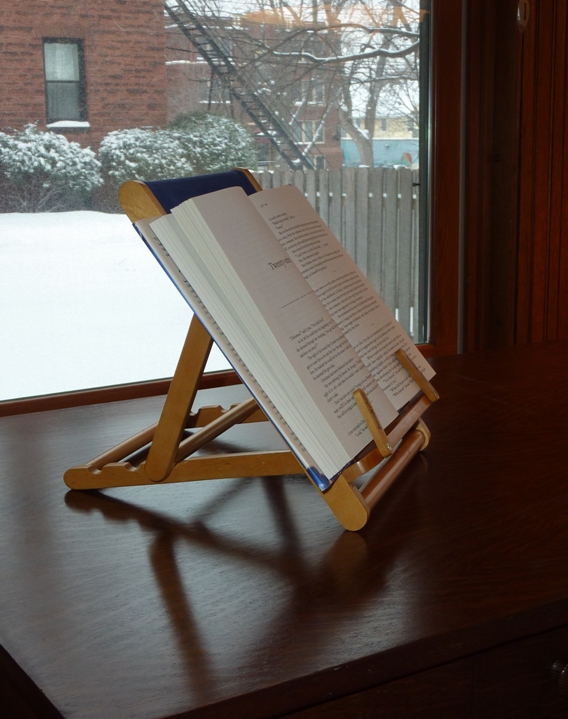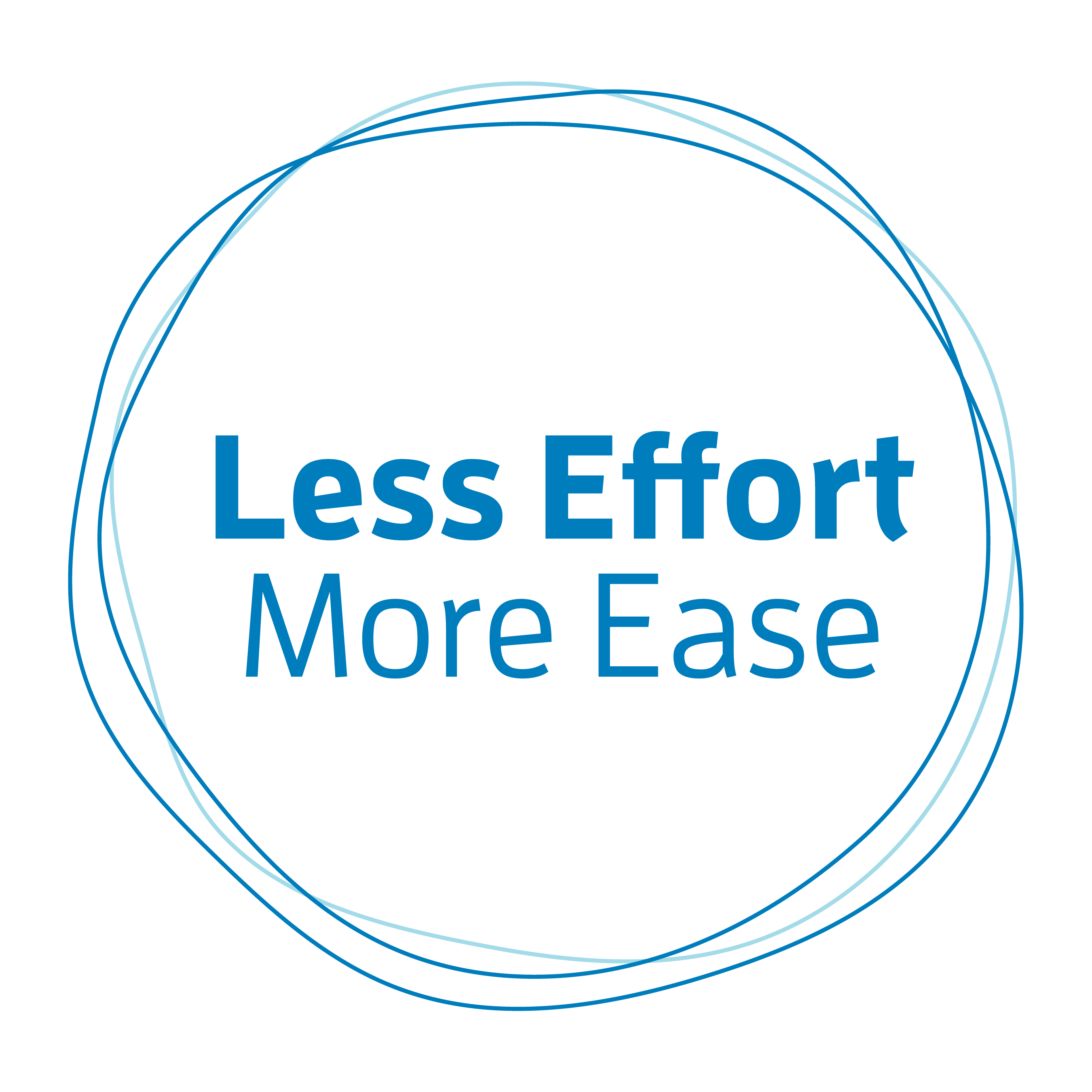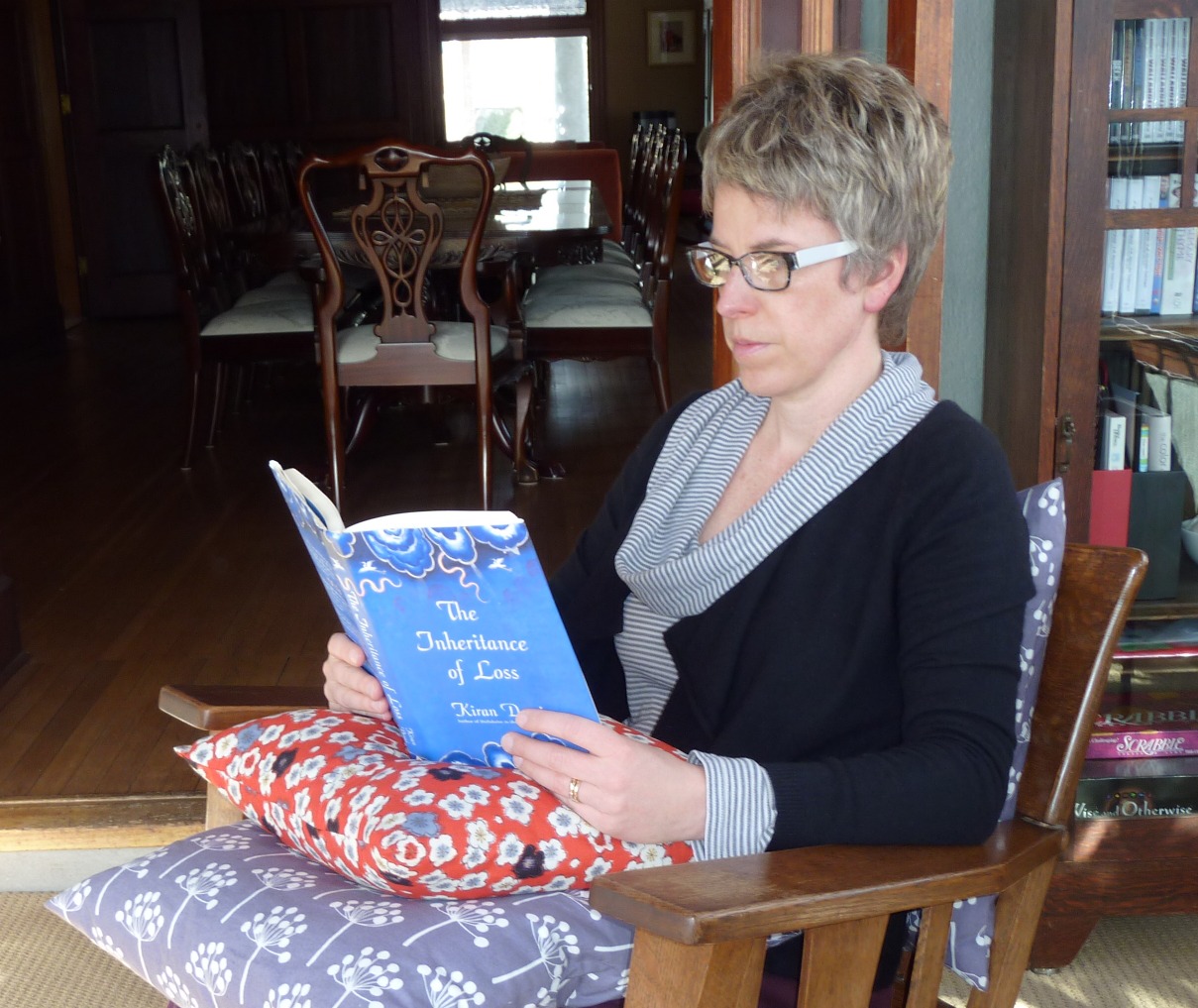By now you’ve probably realized your Nodding Joint only allows you to look up and down so far before the neck and the rest of the spine start getting involved. The range of motion at the joint is somewhat limited.
For example, if you’re sitting in a chair and have your tablet computer flat on the table in front of you, your Nodding Joint does not allow enough range of motion to easily look down without curling your spine forward and collapsing your torso down.
So, you need to bring the tablet closer to your head. But holding it gets tiring. What to do?
One simple strategy I use when I’m sitting on the couch or in a chair and want to read a book or use my tablet is to put a couple of pillows on my lap to raise and hold what I’m reading. I can prop the book or tablet at a comfortable angle and let the pillow hold its weight. In a pinch, if I’m out I can use my purse or briefcase in place of a pillow.
Sitting at the kitchen table in the morning, if I want to read I use a simple book stand like the one below.

Fig 2: A book stand like this can hold a book, newspaper or tablet in a much easier position to read comfortably. You can also get covers for your tablet that allow you to prop it up at a similar angle.
This habit of disrupting the head-spine relationship in order to interact with objects goes beyond reading.
Think about all the items that you bring up to your head in the course of a day. Here are some to start your list:
- fork
- spoon
- an apple
- glasses
- toothbrush
- earrings
- coffee cup
- water glass
I encourage you to add your own items to the above list.
What happens to your head-spine relationship when you’re about to interact with one of these objects? Let’s take a fork for example. Do you leave your head balanced easily on top of your spine and bring the fork up to your mouth or do you push your head and neck forward (even just a little bit) toward the fork as it comes up and in so doing compress and shorten the front of your torso?
Pick one item on your list, say a fork or a coffee cup, and decide to observe what you actually do with your head-spine relationship when you interact with this object. And pick just one item. That is more than enough to start observing!
You may find it also very interesting to observe the habits of others. The next time you’re in a restaurant or a coffee shop, sit in a place where you have a good view of the patrons and watch what they do when they lift their glasses and coffee cups. Often observing others is easier than observing yourself at first.
Image of man respectfully tipping his hat by argh from Pixabay




